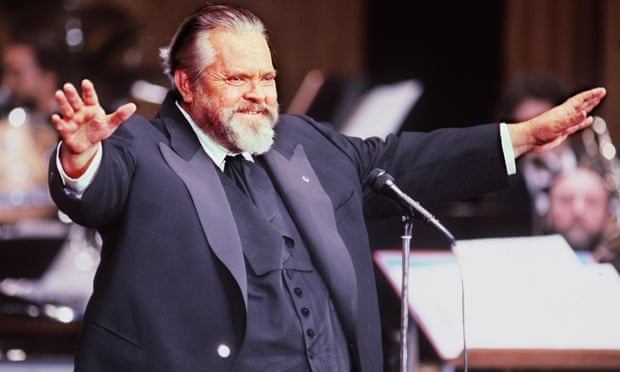When Simon Callow set out to write a biography of Welles, he thought it might take four years. A quarter of a century and three volumes later, he’s still not finished
I understood from the beginning, though I had just one medium-sized, single-volume biography of Charles Laughton under my belt, that any account of Orson Welles would have to be big. His life was so complex, his achievements so multifarious, his personality so unfathomable, the myths so pervasive, that I was sure that if I was to understand him I would have to cast my net very wide, at the same time as going deep down under the surface; one volume, I knew, could never do him justice.
When Nick Hern, who initially commissioned the book, and I went to see the much-admired American publisher Aaron Asher, I told him I wanted to write it in three volumes. The first, I said, would end with Citizen Kane (1941), the second with Chimes at Midnight (1965), and the third, dealing with his unfulfilled last two decades, would be a novel. The great man looked at me pityingly. “If you are very lucky,” he said, “you will be allowed to write the book in two volumes – neither of which will be a novel.” Then he pointed to Michael Holroyd’s Bernard Shaw: first volume bestseller; second volume very successful; third volume poor sales; fourth volume remaindered almost the moment it appeared. I accepted his wisdom and set to: volume one up to Kane; volume two the rest. That was the summer of 1989. Welles had only been dead four years, I had just turned 40.
More
When Nick Hern, who initially commissioned the book, and I went to see the much-admired American publisher Aaron Asher, I told him I wanted to write it in three volumes. The first, I said, would end with Citizen Kane (1941), the second with Chimes at Midnight (1965), and the third, dealing with his unfulfilled last two decades, would be a novel. The great man looked at me pityingly. “If you are very lucky,” he said, “you will be allowed to write the book in two volumes – neither of which will be a novel.” Then he pointed to Michael Holroyd’s Bernard Shaw: first volume bestseller; second volume very successful; third volume poor sales; fourth volume remaindered almost the moment it appeared. I accepted his wisdom and set to: volume one up to Kane; volume two the rest. That was the summer of 1989. Welles had only been dead four years, I had just turned 40.
More

No comments:
Post a Comment